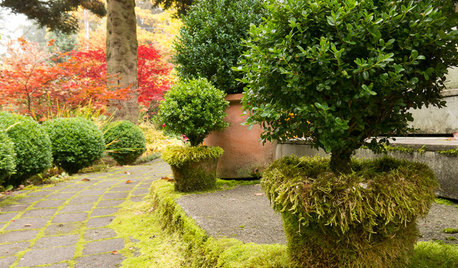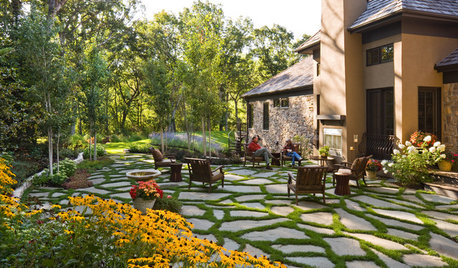Any Suggestions on Rooting Moss, Gallica, Damask?
rjlinva
15 years ago
Related Stories

GARDENING GUIDESThe Beauty of Bare-Root Plants
Plant dormant trees and shrubs in fall using the easy, affordable bare-root method and enjoy beautiful results in spring
Full Story
ARTThe Beauty of Bonsai — Living Art, Rooted in Harmony
Create your own emblem of nature's balance with an art form dating back 1,000 years
Full Story
LANDSCAPE DESIGNEvoke Mystery and History With Moss in the Garden
Go ahead, lie about age. Moss on garden statues, planters and pavers creates the beautifully deceptive look of time’s passing
Full Story
GREEN BUILDINGWorld of Design: The Joy of Moss and Its Modern Uses
This great design plant is 400 million years in the making. See how it’s inspiring art, soothing spaces and building design
Full Story
LANDSCAPE DESIGN7 Low-Maintenance Lawn Alternatives
Turf isn't the only ground cover in town. Get a lush no-grass lawn with clover, moss and other easy-care plants
Full Story
GARDENING AND LANDSCAPINGPatio Pavers Go Green in Between
Kind to the environment and easy on the eyes, pavers with moss or other foliage in the joints create a charming permeable hardscape
Full Story
LANDSCAPE DESIGN8 Modern-Day Moats That Float Our Boats
See how a simple water barrier with ancient roots can make for an eye-catching contemporary garden feature
Full Story
MOST POPULARMeet a Lawn Alternative That Works Wonders
Carex can replace turfgrass in any spot, is low maintenance and adjusts easily. Add its good looks and you’ve got a ground cover winner
Full Story
TREES11 Japanese Maples for Breathtaking Color and Form
With such a wide range to choose from, there’s a beautiful Japanese maple to suit almost any setting
Full Story
PLANTING IDEASEasygoing Tulip Ideas From a Grand California Garden
Gather up these ways to use tulips to make a spring garden of any size overflow with beauty
Full StoryMore Discussions







mad_gallica (z5 Eastern NY)
rjlinvaOriginal Author
Related Professionals
Blue Springs Landscape Contractors · East Patchogue Landscape Contractors · Galt Landscape Contractors · Las Vegas Landscape Contractors · Las Vegas Landscape Contractors · Manhattan Landscape Contractors · Oak Harbor Landscape Contractors · Ponte Vedra Beach Landscape Contractors · Westford Landscape Contractors · Weymouth Landscape Contractors · Cambridge Roofing & Gutters · Newton Roofing & Gutters · Stamford Roofing & Gutters · Hillcrest Heights Roofing & Gutters · Orlando Roofing & GuttersUser
generator_00
rjlinvaOriginal Author
mad_gallica (z5 Eastern NY)
rjlinvaOriginal Author
hartwood
len511
rjlinvaOriginal Author
mad_gallica (z5 Eastern NY)
len511